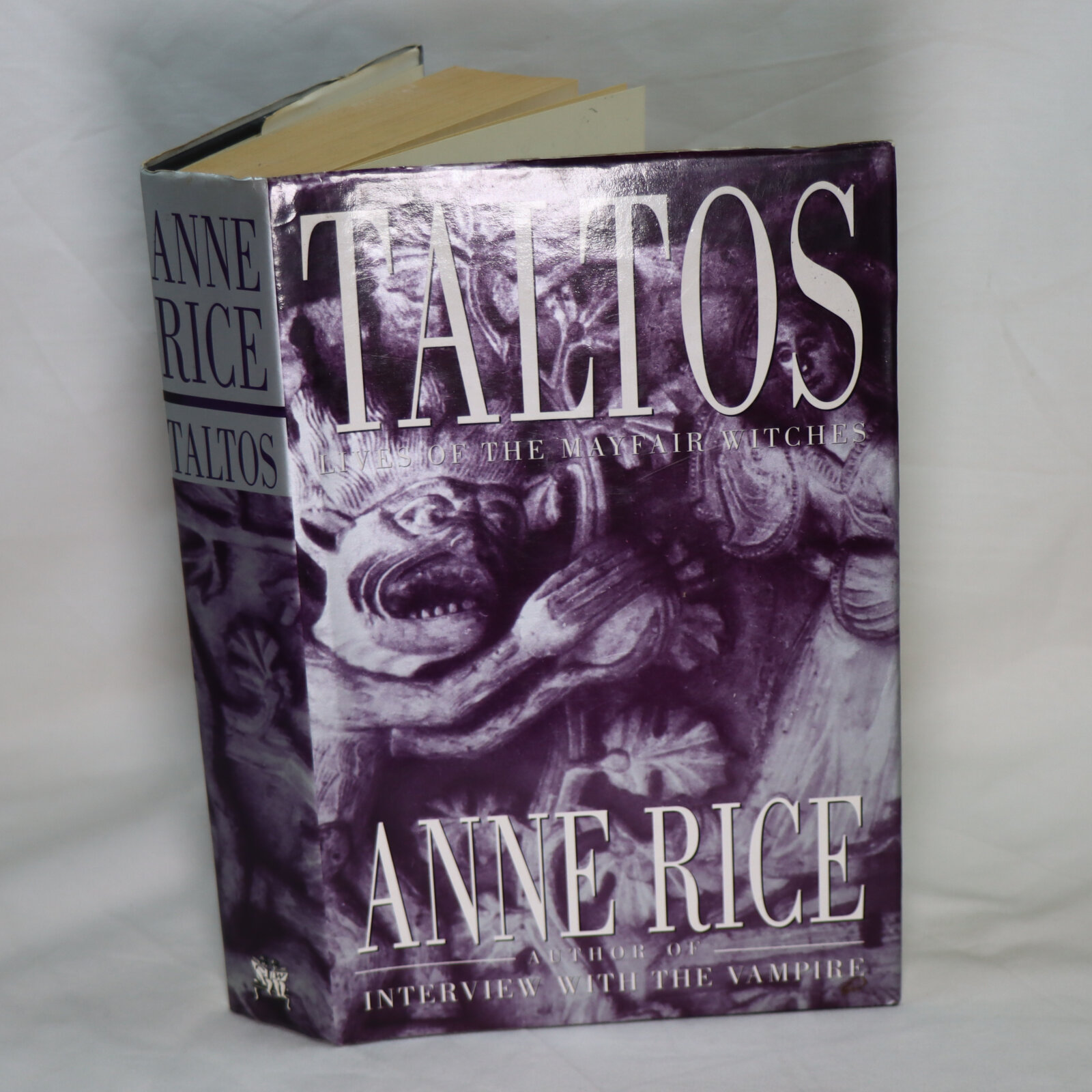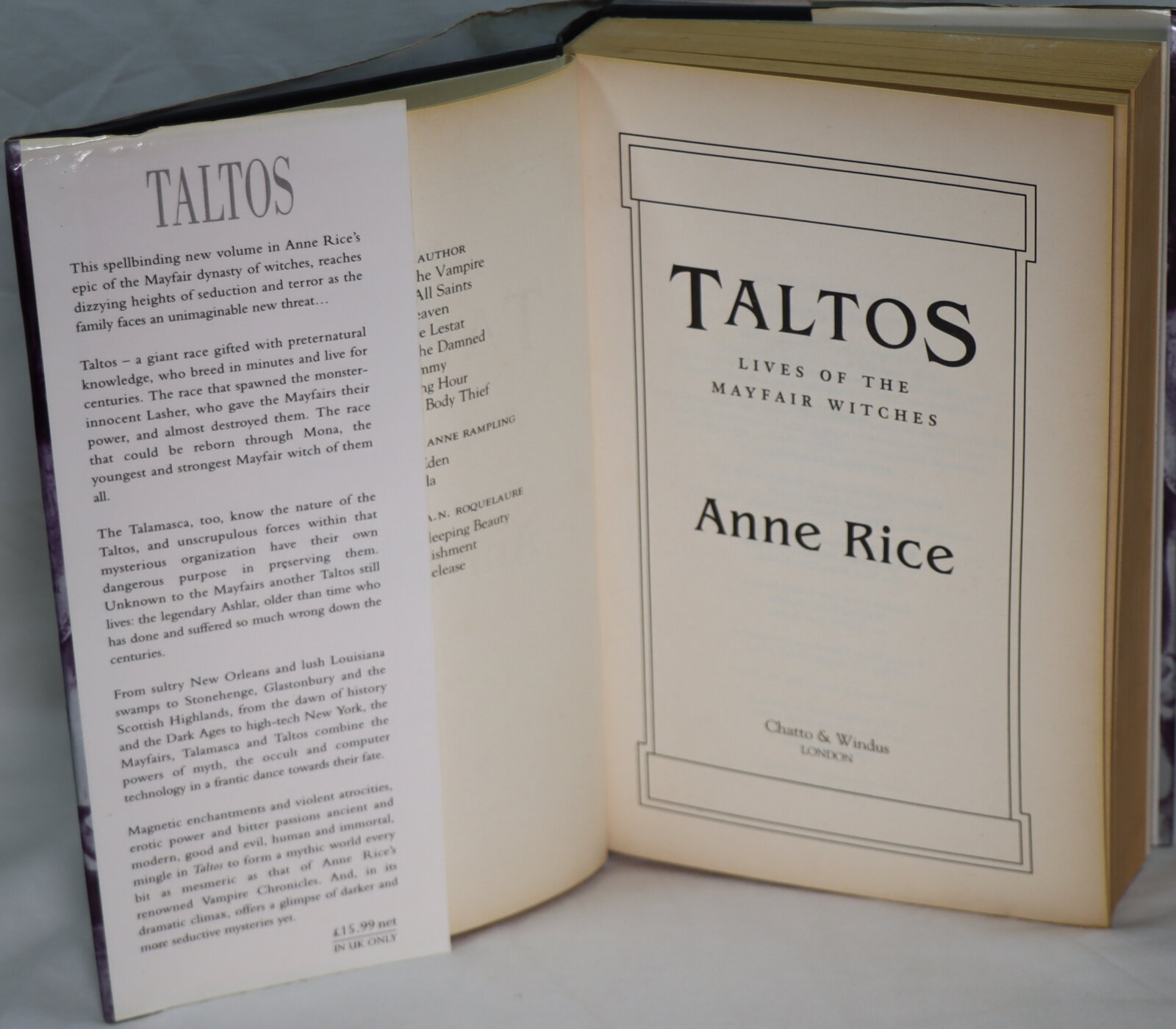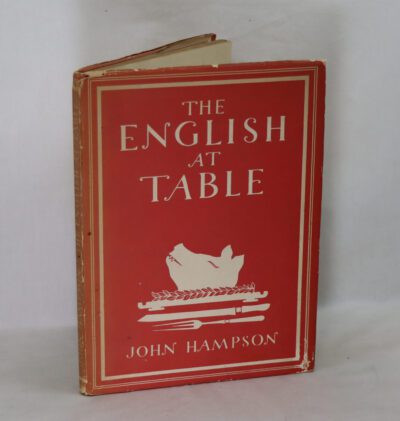Taltos. Tales of Mayfair Witches.
By Anne O'Brien Rice
ISBN: 9781627155915
Printed: 1994
Publisher: Chatto & Windus. London
| Dimensions | 17 × 24 × 5 cm |
|---|---|
| Language |
Language: English
Size (cminches): 17 x 24 x 5
Condition: Fine (See explanation of ratings)
Item information
Description
In the original dustsheet. Black cloth binding with gilt title on the spine.
-
F.B.A. provides an in-depth photographic presentation of this item to stimulate your feeling and touch. More traditional book descriptions are immediately available.
NATIONAL BESTSELLER • “Taltos is the third book in a series known as the lives of the Mayfair witches … Their haunted heritage has brought the family great wealth, which is exercised from a New Orleans manse with Southern gentility; but of course such power cannot escape notice … or challenge … [Taltos] is a curious amalgam of gothic, glamour fiction, alternate history, and high soap opera.”—The Washington Post Book World
Taltos continues the epic occult saga that began with The Witching Hour and Lasher. Taltos takes readers back through the centuries to a civilization part human and part wholly mysterious origins, at odds with mortality and immortality, justice and guilt.
Reviews:
-
Ever since reading Lasher when someone left it behind I’ve been left intrigued by the Mayfairs. The third book in the Mayfair Witches series, which tells the story of Ash, a centuries-old Taltos (Taltos grow to a height of seven feet, carry an extra set of chromosomes, and have a superior intelligence that enables them to digest dictionaries and encyclopedias in moments.). The book centers around a wicked scheme being pursued by the Talamasca, an order of scholars who study the supernatural and keep records of the Mayfair witches. When a particular scholar is murdered, Rowan Mayfair, the mother of the half demon/half witch in Lasher, and husband Michael Curry investigate. Ash meets with them, shows them that he’s harmless, and, like Lasher, has his own story to tell. Although this novel is a suspenseful and sometimes thought-provoking page-turner, it does not stand on its own; the first two books in the series must be read first.
-
Up till chapter 25 I thought it to be an incoherent and rather pointless read, bathing in a kind of small-scale irrelevance. Rice didn’t seem to be able to pick the story up in a rush, and write a worthy, grand sequel to Lasher. It is well written, but only “okay” or “good”. Three stars maybe. But from Chapter 25 onwards, she finds her sublimity again, when she goes into the history of the Taltos. This is truly a magnificent, spell-binding and overpowering read. I was truly moved by the story of Ash, and the ending was also very much emotionally moving for me. Overall, I am very satisfied with how the trilogy ends. All ends are tied together with genius and with incredibly creative literary writing. In all, I liked the first three Vampire Chronicle books a bit better, but with the Mayfair witches trilogy Rice has truly written top quality books and a story that is both terribly inventive and simply a moving, fascinating and absorbing read.
Anne Rice was born and raised in New Orleans, Louisiana, which provided the backdrop for many of her famous novels. She was the author of more than 30 books, including her first novel, Interview with the Vampire, which was published in 1976. It has since gone on to become one of the best-selling novels of all time, and was adapted into a major motion picture starring Brad Pitt, Tom Cruise, Kirsten Dunst, and Antonio Banderas. In addition to The Vampire Chronicles, Anne was the author of several other best-selling supernatural series including Mayfair Witches, Queen of the Damned, the Wolf Gift, and Ramses the Damned. Under the pen name A.N. Roquelaure, Anne was the author of the erotic (BDSM) fantasy series, The Sleeping Beauty Trilogy. Under the pen name Anne Rampling she was the author of two erotic novels, Exit to Eden and Belinda. A groundbreaking artist whose work was widely beloved in popular culture, Anne had this to say of her work: “I have always written about outsiders, about outcasts, about those whom others tend to shun or persecute. And it does seem that I write a lot about their interaction with others like them and their struggle to find some community of their own. The supernatural novel is my favorite way of talking about my reality. I see vampires and witches and ghosts as metaphors for the outsider in each of us, the predator in each of us…the lonely one who must grapple day in and day out with cosmic uncertainty.”
Want to know more about this item?

Related products
Share this Page with a friend











